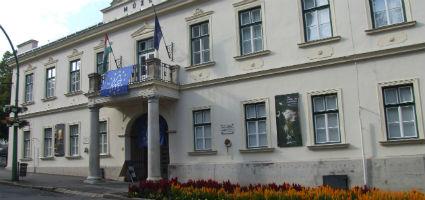2024. April 29. Monday
Ferenc Kazinczy Museum - Sátoraljaújhely
 |
Address: 3980, Sátoraljaújhely Dózsa György u. 11.
Phone number: (47) 322-351
E-mail: info@kazinczymuzeum.hu
Opening hours: Tue-Sun 9-17
|
The exhibition has closed for visitors.
2015.09.15. - 2015.09.30.
Museum tickets, service costs:
|
Ticket for adults
|
600 HUF
|
|
|
Ticket for students
|
300 HUF
|
|
|
Ticket for pensioners
|
300 HUF
|
|
|
Photography
|
300 HUF
|
|
|
Video
|
300 HUF
|
The Golden Treasure of Bodrogolasz is a considerable find from the late medieval - early modern history of the Hungarian Kingdom. The 15-16th century golden coins discovered in 1990 XV-XVI. have taken a pretty great adventure in the past 25 years. Most of the ducats were discovered by local residents who sold them to local and metropolitan traders, or gave away to their kinship.
Police investigation, then archaeological excavations in the site resulted a total of 72 coins were first relocated in the Kazinczy Museum's collection in Sátoraljaújhely. Later they were relocated in their present location, the Herman Ottó Museum Coin Gallery. Two-third of the gold (47 pieces) was made in Hungarian chambers (Kremnica, Baia Mare, Sibiu). The other 26 were issued, mainly in parts the Holy Roman Empire, in the territory of neighbouring states.
The oldest piece of treasure was made in 1438 during the reign of Albert von Habsburg (1438-39). The last time it was possibly hidden away is estimated around 1567, as the settlement of Bodrogolaszi that year is documented as a destroyed settlement. The owner, the person who hid the however, is still lost in the mists of history. We can only guess that a mercenary soldier, a Pauline monk, a wine merchant, an entrepreneurs participating in strategic development of Kosice had so much wealth.
Police investigation, then archaeological excavations in the site resulted a total of 72 coins were first relocated in the Kazinczy Museum's collection in Sátoraljaújhely. Later they were relocated in their present location, the Herman Ottó Museum Coin Gallery. Two-third of the gold (47 pieces) was made in Hungarian chambers (Kremnica, Baia Mare, Sibiu). The other 26 were issued, mainly in parts the Holy Roman Empire, in the territory of neighbouring states.
The oldest piece of treasure was made in 1438 during the reign of Albert von Habsburg (1438-39). The last time it was possibly hidden away is estimated around 1567, as the settlement of Bodrogolaszi that year is documented as a destroyed settlement. The owner, the person who hid the however, is still lost in the mists of history. We can only guess that a mercenary soldier, a Pauline monk, a wine merchant, an entrepreneurs participating in strategic development of Kosice had so much wealth.